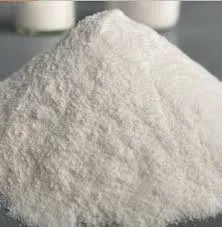
Sep . 22, 2024 20:51 Back to list
hpmc grades
Understanding HPMC Grades A Comprehensive Overview
Hydroxypropyl Methylcellulose (HPMC) has become an indispensable ingredient in various industries, particularly in pharmaceuticals, food, cosmetics, and construction. The different grades of HPMC can significantly impact its performance and application. This article delves into the significance of HPMC grades, their characteristics, and the factors influencing their selection.
Understanding HPMC Grades A Comprehensive Overview
There are several HPMC grades, categorized based on their viscosity and thermal properties. For example, low-viscosity grades are often utilized in applications requiring rapid dissolution, such as tablets, whereas high-viscosity grades provide gel-like textures in formulations like sauces or cosmetics. The viscosity is typically measured in centipoise (cP) and can range from as low as 3,000 cP to over 100,000 cP, depending on the grade.
hpmc grades

When selecting an HPMC grade, several factors must be considered. Firstly, the intended application significantly influences the choice of grade. For instance, HPMC grades with higher viscosity are favored in pharmaceutical formulations like controlled-release tablets, as they help in modulating the release rate of the active ingredients. Conversely, lower viscosity grades are preferred for liquid applications to ensure ease of processing and application.
Another essential factor is the thermal stability of the HPMC grade. Some formulations require heat for processing, and thus, HPMC grades with higher thermal stability are necessary to avoid degradation. Additionally, the degree of hydroxypropyl and methyl substitution can affect the solubility, gel formation, and overall performance of the final product.
In the food industry, HPMC is often used as a fat replacer, thickener, or stabilizer. Food-grade HPMC is specifically designed to meet regulatory standards, ensuring safety for consumption. In the construction sector, it serves as a crucial additive in cement and other building materials, enhancing water retention and workability.
In conclusion, understanding the various grades of HPMC is essential for industries looking to optimize their formulations. The diverse applications of HPMC across sectors highlight its versatility and importance. As technology advances, we can expect to see even more specialized HPMC grades designed to meet the unique challenges of various applications.
-
Versatile Hpmc Uses in Different Industries
NewsJun.19,2025
-
Redispersible Powder's Role in Enhancing Durability of Construction Products
NewsJun.19,2025
-
Hydroxyethyl Cellulose Applications Driving Green Industrial Processes
NewsJun.19,2025
-
Exploring Different Redispersible Polymer Powder
NewsJun.19,2025
-
Choosing the Right Mortar Bonding Agent
NewsJun.19,2025
-
Applications and Significance of China Hpmc in Modern Industries
NewsJun.19,2025







